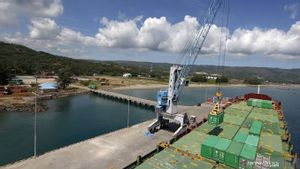The Center for Volcanology and Geological Hazard Mitigation (PVMBG) reports that Mount Marapi in West Sumatra (West Sumatra) has now experienced a change in the type of eruption from phreatic to magma. "This is basically a series of processes from rising magma to the surface or called the magma intrusion process," said PVMBG Volcano Team Head Ahmad Basuki when contacted in Jakarta, Wednesday, January 10, confiscated by Antara. Ahmad explained, when a magma intrusion occurs, there will be an increase in heat and gas inside Mount Marapi's body. Furthermore, the heat is increasing and the gas that forms is increasing, as well as increasing the pressure inside the volcano's body. More and more water vapor due to the influence of groundwater up to a stage that cannot be contained anymore, he said, resulting in a phreatic eruption.
"In the conditions of the phreatic eruption, magma is still deep inside the mountain body. Furthermore, with the phreatic eruption, the magma road to the surface will be easier," he said. Then, he continued, magma reached a shallow surface which finally when the magma eruption occurred was thrown to the surface, so it was called a magmatic eruption because the material released was a new magma.
Head of PVMBG Hendra Gunawan added that a magmatic eruption has the potential to cause an accumulation of pressure within a volcano that can cause an eruption with increasing energy and a range of incandescent material that is further away from the eruption center. "The potential or threat of danger of Mount Marapi can also become wider," said Hendra.
SEE ALSO:
The English, Chinese, Japanese, Arabic, and French versions are automatically generated by the AI. So there may still be inaccuracies in translating, please always see Indonesian as our main language. (system supported by DigitalSiber.id)
















